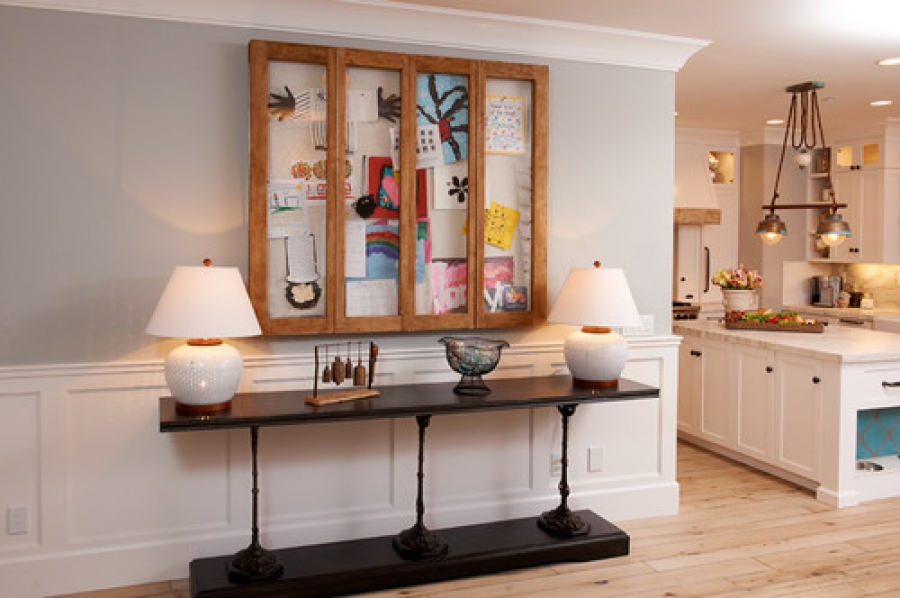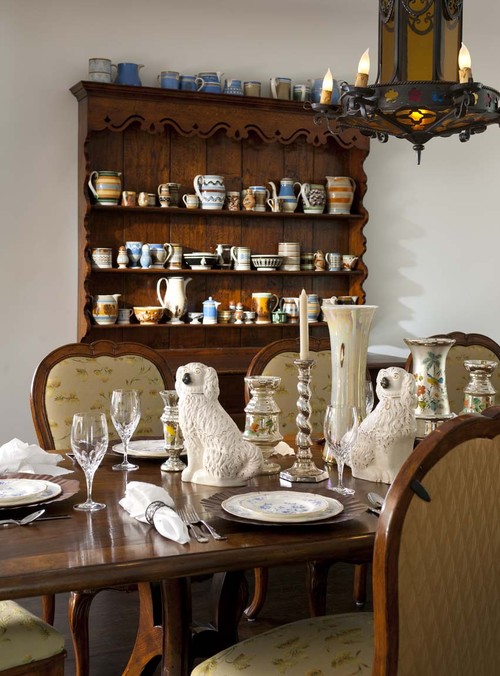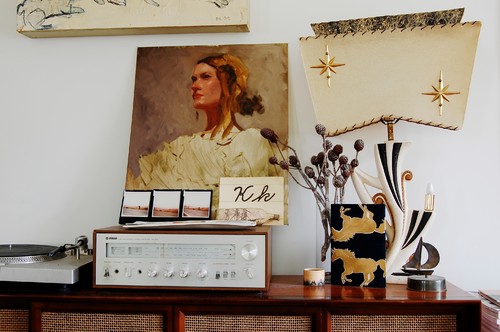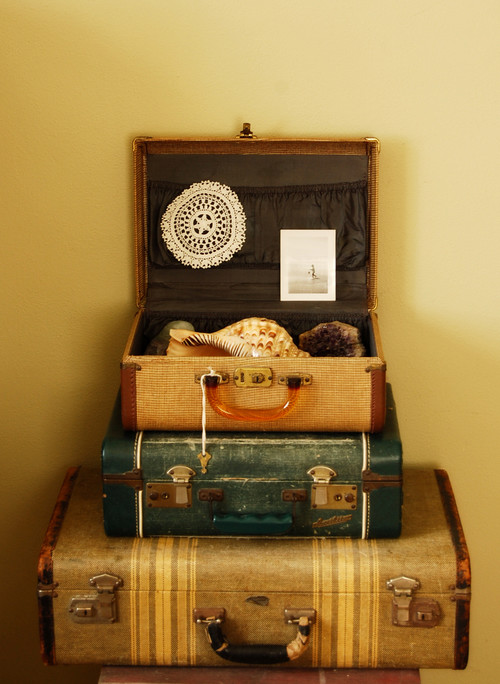Do you know how much space your keepsakes take up? If you had to leave your home quickly, could you locate your most treasured (nonliving) possessions within a few minutes? And what about the family members who will one day inherit all of this stuff: Will it feel like a blessing to them or a burden?
If you have a basement, a garage or an attic (and perhaps a storage unit, too) filled with boxes of stuff, you are not alone. It's easier to hold on to something than let it go. But the reality is, things have to go sometime — why not start making those decisions now, before a fire, a flood or future relatives make them for you? You can take control of your stuff, and your life story.
Here you'll learn how to confidently decide what is worth keeping for all time and what is not.
Begin box by box. It's emotionally draining work sorting through keepsakes, so don't push yourself to take on more than you can handle. This is not the same thing as going on a clutter-busting spree - some of the items you will be looking at may call up memories of people and experiences you haven't thought about for many years. You may cry, get angry or get the urge to call up an old friend. In other words, don't march down to your storage unit bright and early on Saturday morning and expect to go through the entire thing by the end of the weekend. Pick up one box and go through it piece by piece, at your leisure. When it's done (and only then), go get another.
I find it helps to pick several categories of stuff that you can commit to completely doing away with. This saves a lot of painful, piece-by-piece decision making that can really bog you down. Following are a few categories to consider tossing.
What to Let Go
Other people's memories
. The program from your sister's high school graduation, favors from your friend's wedding, a pressed flower from your niece's baptism. Release yourself from the burden of keeping others' memories.
Short-term saves. Some things, like birthday cards, event programs and invitations, are nice to keep around for a while. Looking at your cards lined up on the mantel or pinned to your bulletin board after a birthday dinner can be a pleasant reminder of the people who love you, and a friend's pretty wedding invite can look lovely on your bulletin board. But you don't need to keep them all forever.
Freebies. Swag from conferences, wedding favors and workplace giveaways have no business taking up valuable space alongside true keepsakes. Make a mental note to kindly turn down freebies the next time they are offered to you, unless you really want them. So often we take something just because it is free!
Once you move beyond these first categories of stuff (other people's memories, short-term saves, freebies), it gets a little more complicated. At any point in the process, if you are really having a hard time letting go of something that you want to let go of, put it in a separate bin or pile.
Don't worry too much about how big this pile gets; these are tough decisions to make, and you can't get something back once it's gone. The goal is not just to get rid of stuff but to feel good about your decisions. You will be dealing with this pile, so it's not a cop-out; it's just buying you some time.
What to Consider Letting Go Next
Oversize mementos
. Sports trophies and giant school projects come to mind, but perhaps you have some other bulky items taking up space in your storage area. If something is too big to fit in a file box, give some serious thought as to whether it is worth keeping. A photograph of the sports event, awards ceremony or science fair will take up far less room, and will probably feel more meaningful down the road anyway.
Negative keepsakes. Some journal writing is really just venting - it's the process of doing it that's important; you don't need to keep the work itself for posterity. As the author and editor of your life story, you get to make the call on what is included. This goes for photos as well as diaries: If looking at pictures of that old boyfriend who dumped you makes you feel crummy all over again, toss it out, for goodness' sake!
Inherited stuff. Oh, this one is tough. I think it can help to think of the loved one whose belongings you now have as they were — in other words, as a person struggling with editing their own possessions, just as you are right now.
Grams certainly wouldn't want you feeling weighed down by her china set, would she? Be honest about your feelings about the stuff you have inherited. Are you ever going to use it? Do you love it for what it is, or do you love it (and hold on to it) only because you loved the person who gave it to you?
My advice is to honor your feelings but respect your space. This might mean keeping a single soup tureen (the one you remember from all those Sunday dinners) and passing the rest along to another relative who really wants it, or selling it on eBay. If you can't come to a decision quite yet, put it in the "later" pile.
Things that have not, or will not, age well. Some objects are just not meant to last. Give crumbling flowers, ancient pasta sculptures and badly damaged photos the heave-ho, and be aware of an item's potential longevity before you save it the next time.
For instance, consider taking a photo of your son holding that Thanksgiving centerpiece — you can still save the piece itself for a few years, and enjoy bringing it out as a table decoration, but when it begins to fall apart you can let it go without feeling bad.
Remember, the fewer things you keep, the more special they will become to you — and to those you love. Begin to think of yourself as the editor of your life story. When someone peeks into your boxes of treasures, what story will the photos, papers and objects tell? It is up to you to define the arc of your life's tale. To highlight the best times, the things that have been most meaningful to you, and to let the less important details fall out of focus.
What to Keep
Reminders of triumph over adversity
. Remember how I said to toss photos of your no-good ex-boyfriend? Well, do that if you haven't yet. But if you have a photo of you on that awesome postbreakup road trip with your best friend, put that puppy in a frame! The most compelling stories include hardship; the key is to focus on how you have grown because of your challenging experiences.
Reminders of positive experiences. Your wedding day, a fabulous birthday party, a special trip with your mom - one of the main reasons we keep mementos is for their ability to bring up memories we enjoy reliving. But we are talking really positive, here. Not neutral. Not, "Oh, that was a pretty nice day." The things you choose to keep forever should remind you of the shining gems in your life: the most important people, places and experiences you have ever had. Don't settle for humdrum.
The best representative example. You may cherish the memory of your wedding day, but you do not need to keep all 50 extra programs, every outtake the photographer sent you and an uneaten favor bag of Jordan almonds. Your favorite photographs and a few key mementos will hold more emotional power over the years than a giant boxful of wedding stuff. If you took 50 photos at a single birthday party, whittle them down to a handful that best capture the crowd and a few key moments.
The most loved. The teddy bear that went with your child everywhere, the little corduroy overalls that turned velvety from being worn and washed so many times, the toy with the most teeth marks - these are the sorts of things worth saving.
And this applies to grown-up stuff, too! If there is a special piece of clothing that instantly brings to mind a delicious time in your life, go ahead and keep it, even if you know you will never wear it again.
One of my own most treasured keepsakes is my grandfather's hat. In so many of my memories of him, he is wearing this hat. I have a picture of myself as a little girl wearing the hat. And it still smells like his pipe tobacco - that's something a photograph just can't do.
Finishing up and moving forward. As you get further into the process of editing your keepsakes, choose a special container to house the keepers. This container should be small enough for you to carry easily and sturdy enough to protect its treasured contents from mildew and critters. Keep your special box in the main part of your house, somewhere it can be quickly and easily located if you ever needed to evacuate.
As you work your way through all of your stuff, ask yourself of each item, Does this deserve a spot in The Box?
I urge you not to wiggle on this point. Don't make it two or three boxes. Just one box. Go ahead and keep a larger bunch of not-quite-so-important keepsakes in a different location, if you must, but when it comes to The Box, be ruthless. Over time you may come to realize that the stuff not in the box doesn't really need to be taking up all of that valuable real estate, and when you are ready, you can move on from it.
But having a single box of most treasured belongings is something wonderful in itself. If the rest of it disappeared, you would know it would be OK - that if this one box were left, it would be enough to be your legacy.
Also See















